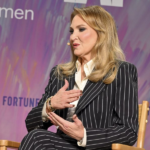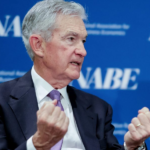But both sides of such deals can make surprising gains.
The S&P 500 gained 10.5% in that span with a standard deviation of 16.8%, a much worse return on a risk-adjusted basis.
These numbers, however, may not reflect the underlying picture. Unlike stocks trading on public exchanges, the prices of private assets don’t change based on the whims of investors day-to-day.
Instead, valuations of most private companies, real estate properties, and other assets PE firms hold are typically based on subjective assumptions that don’t fluctuate like public equity markets do, Tim McGlinn, an investment veteran and former adjunct finance professor at Seton Hall, told Fortune.
But when investors or prospective investors believe the holdings can actually be sold at those prices, “that’s when things become problematic.”
Ultimately, private equity firms make money for investors by exiting their investments, when they attempt to turn notional valuations on paper into cash. Therefore, there must be some correlation between the performance of public and private assets, said Jason Reed, a finance professor at the University of Notre Dame.
“If the market’s doing really well broadly, well then you’re going to have lots of opportunities for businesses to buy your company, other private equity companies to buy your company, to take them public and IPO them,” he told Fortune. “But if the economy is not doing great, businesses are struggling, then you’re not going to have as many opportunities overall to sell.”
“Following a months-long review, the University is in process to sell select private equity fund interests,” Yale said in a statement to Fortune. “Private equity remains a core element of our investment strategy, and we continue to commit significant capital to our existing world-class partners, while pursuing new private equity opportunities to support the long-term growth of the Endowment.”
This doesn’t appear to be a distressed sale, McGlinn said, but the deal is otherwise hard to evaluate. More mature funds trade very differently than newer ones, and various positions are typically packaged together in these types of transactions.
“Yale being Yale, you can assume they’re getting the best price they can,” McGlinn said.
As a result, Yale, Harvard, and other universities could take much less of a haircut than they might have feared while also booking gains on their initial stakes.
That’s because there is reason to believe many buyers are willing to overpay, McGlinn said. Regardless of what secondary funds dish out to acquire these stakes, he explained, they are allowed to then mark these investments up to the old net asset value.
“It makes your brain melt,” he said.
“It’s almost like a full wash and rinse cycle,” said Hooke, formerly the principal investment officer of the World Bank’s International Finance Corporation.
Universities, of course, get to be on the other side of these deals. Even though they are selling their PE stakes at a discount to NAV, they could be getting more than the capital they had committed to those investments up until this point.
In other words, endowments might still be escaping with a profit.









